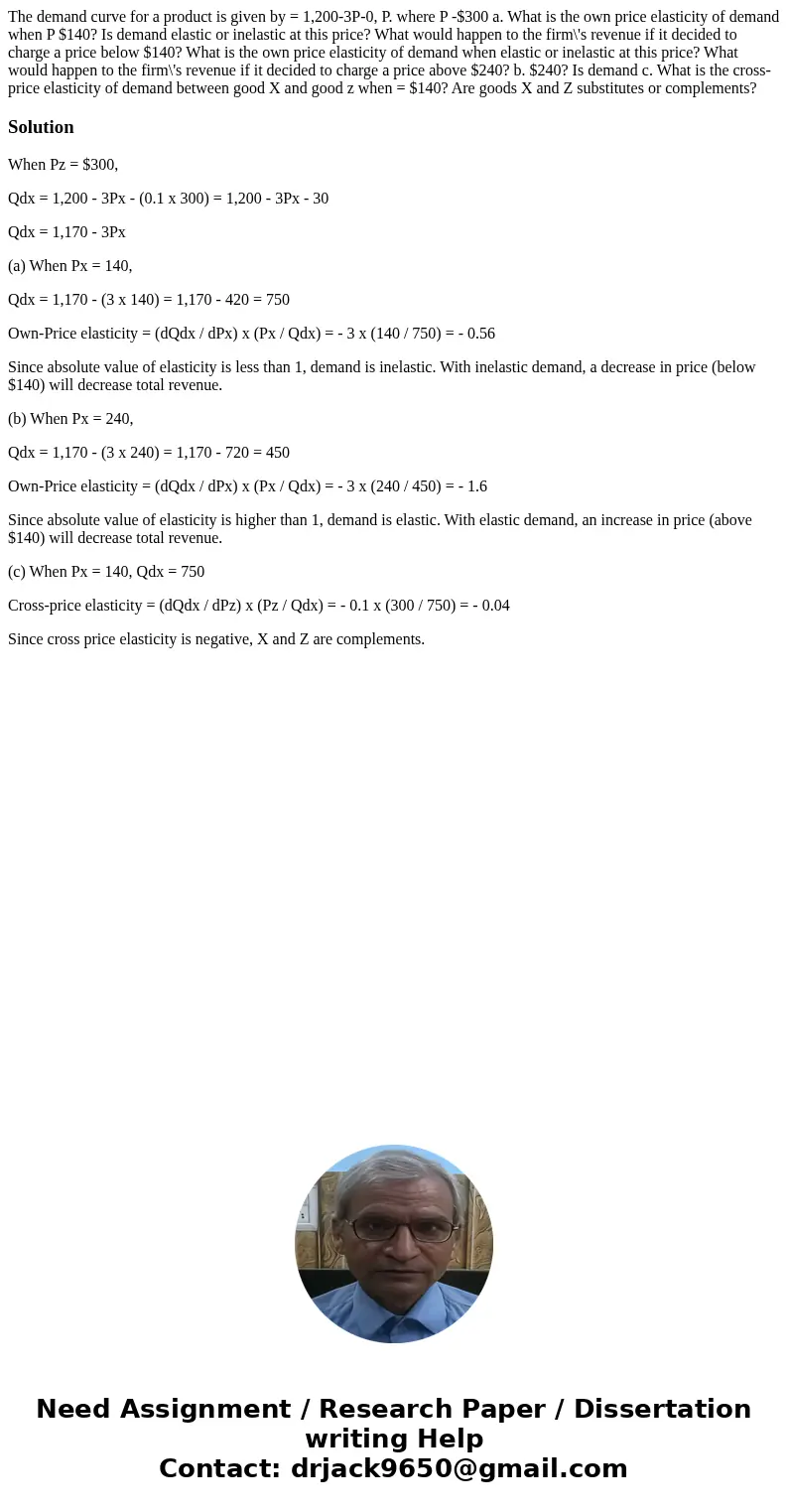The demand curve for a product is given by 12003P0 P where
Solution
When Pz = $300,
Qdx = 1,200 - 3Px - (0.1 x 300) = 1,200 - 3Px - 30
Qdx = 1,170 - 3Px
(a) When Px = 140,
Qdx = 1,170 - (3 x 140) = 1,170 - 420 = 750
Own-Price elasticity = (dQdx / dPx) x (Px / Qdx) = - 3 x (140 / 750) = - 0.56
Since absolute value of elasticity is less than 1, demand is inelastic. With inelastic demand, a decrease in price (below $140) will decrease total revenue.
(b) When Px = 240,
Qdx = 1,170 - (3 x 240) = 1,170 - 720 = 450
Own-Price elasticity = (dQdx / dPx) x (Px / Qdx) = - 3 x (240 / 450) = - 1.6
Since absolute value of elasticity is higher than 1, demand is elastic. With elastic demand, an increase in price (above $140) will decrease total revenue.
(c) When Px = 140, Qdx = 750
Cross-price elasticity = (dQdx / dPz) x (Pz / Qdx) = - 0.1 x (300 / 750) = - 0.04
Since cross price elasticity is negative, X and Z are complements.

 Homework Sourse
Homework Sourse